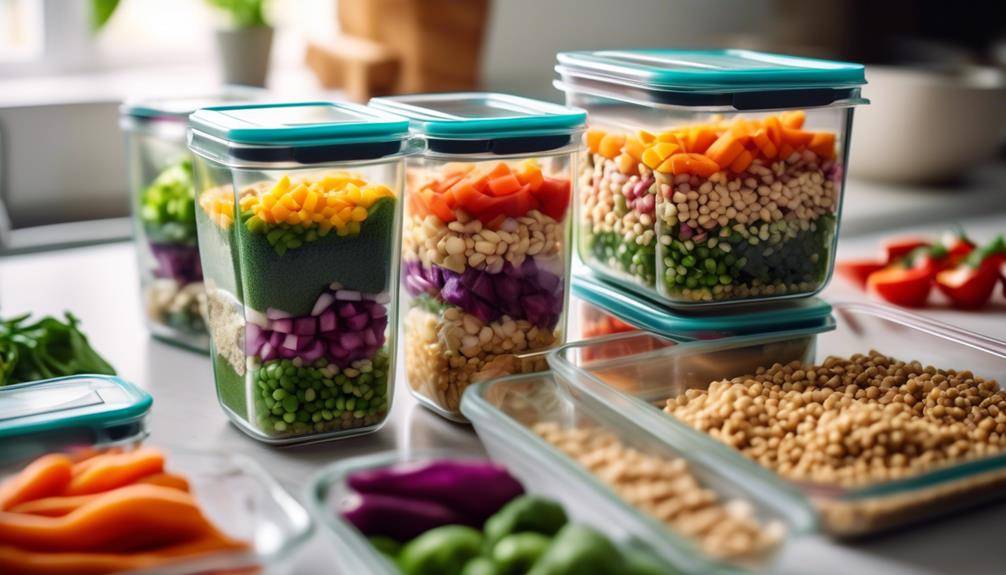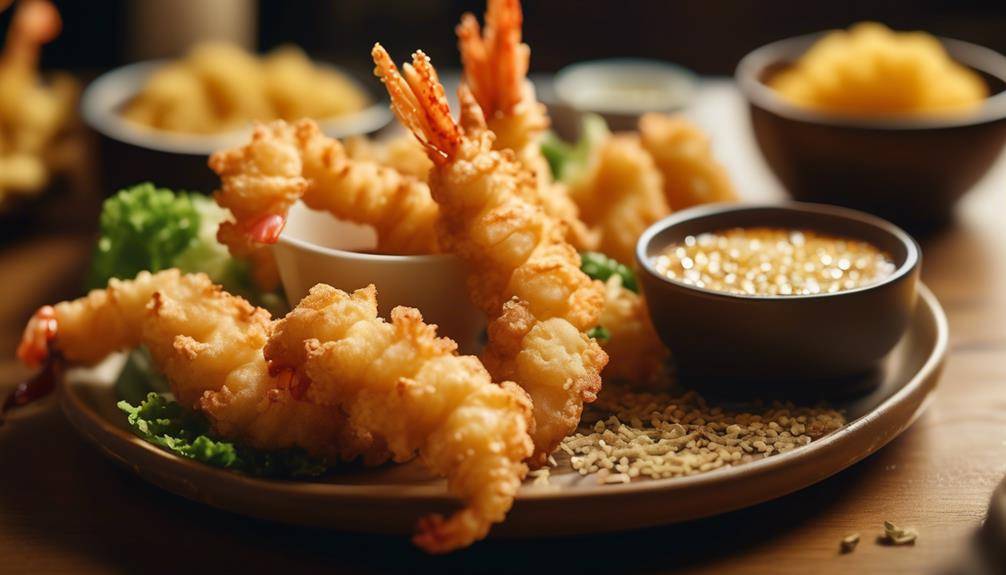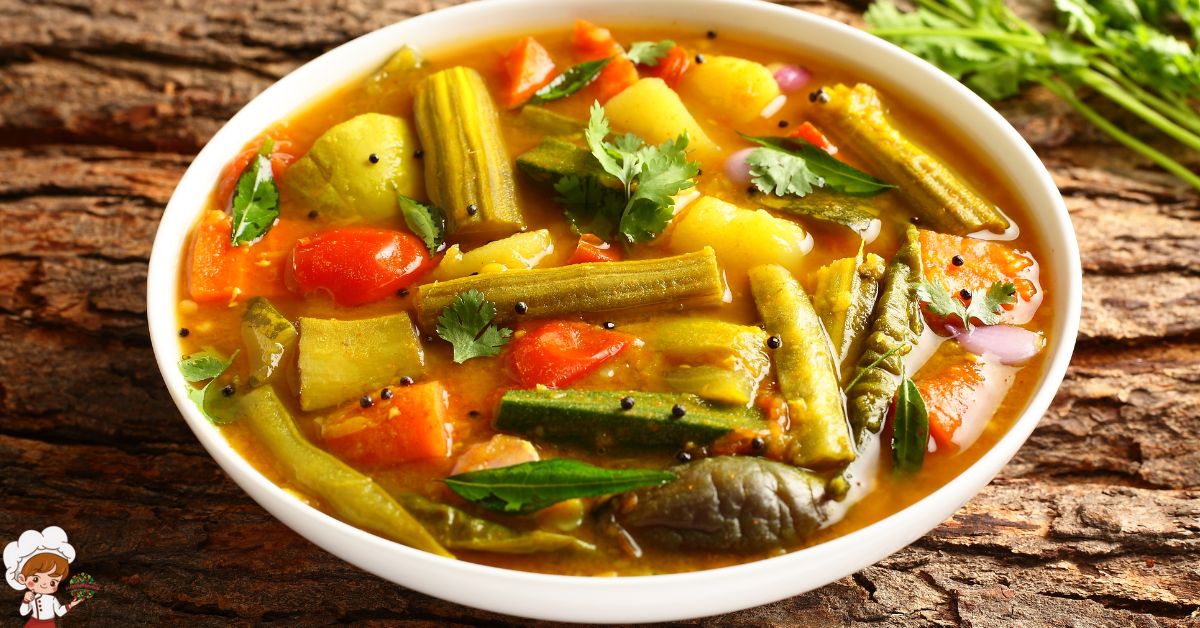Amazing Classic Swedish Fish Recipes And Culinary Treasures

You’re in for a treat with Amazing Classic Swedish Fish Recipes that beautifully highlight the country’s culinary treasures. Start with pickled herring, often served on crispbread, or try gravadlax, where high-quality salmon is cured with salt, sugar, and dill. A hearty fish soup featuring fresh salmon or cod elevates flavors with local vegetables. Don’t miss out on baked salmon with herbs or traditional rödspätta, the breaded plaice that’s crispy and satisfying. Each dish tells a story of sustainability and flavor. Keep exploring to uncover even more delicious secrets of Swedish fish cuisine!
Traditional Herring Dishes
When it comes to traditional herring dishes, you’ll discover a rich array of flavors and preparations that celebrate this beloved fish. Herring has played a significant role in Scandinavian cuisine for centuries, with its history intertwined with the survival of coastal communities. You’ll find that herring is often pickled, smoked, or fermented, showcasing its versatility and the creativity of chefs throughout history.
One popular dish is “sill,” pickled herring served in various marinades, such as mustard or onion. Each region has its own twist, so you might want to experiment with different recipes. During herring festivals, often held in coastal towns, you’ll see locals enjoying these dishes, highlighting the cultural importance of herring in Swedish life. These gatherings not only celebrate the fish itself but also the communal experience of sharing food with friends and family.
Another traditional preparation is “sill med löksill,” or herring with onions. This dish combines the tangy flavor of pickled herring with the sweetness of onions, creating a delightful balance. You can serve it on crispbread or alongside boiled potatoes, making it a staple at smorgasbords and festive occasions.
Lastly, don’t overlook the classic “gravad sill,” where herring is cured with a mix of salt, sugar, and spices. This dish is typically served with a mustard sauce and is a favorite during celebrations. Embracing herring not only connects you to its rich history but also to the vibrant culture of herring festivals that continue to thrive today.
Gravadlax: Cured Salmon
When you’re ready to explore the world of gravadlax, you’ll appreciate the traditional curing techniques that make this dish special. You’ll also want to contemplate flavor enhancements and pairings that elevate the salmon’s taste. Finally, let’s talk about serving suggestions and presentation to impress your guests.
Traditional Curing Techniques
Although curing salmon may seem intimidating, mastering the traditional technique of gravadlax can elevate your culinary skills. This age-old method relies on simple salting methods that draw out moisture and enhance flavor. Start by selecting a high-quality salmon fillet, then mix together salt, sugar, and fresh dill. The balance of these ingredients is essential; they not only flavor the fish but also initiate the fermentation process.
Once you’ve coated the salmon with your mixture, place it in a dish, cover it with plastic wrap, and weigh it down with a heavy object. This pressure helps the curing process and guarantees even seasoning. You’ll need to refrigerate it for 48 to 72 hours, allowing the salt and sugar to work their magic. During this time, the texture transforms, becoming firmer and more flavorful.
After the curing period, simply rinse the salmon to remove excess salt and slice it thinly. You’ll be left with a deliciously cured salmon that’s perfect for various dishes. With practice, you’ll refine your technique and impress friends and family with this traditional Swedish delicacy!
Flavor Enhancements and Pairings
Gravadlax, with its delicate balance of flavors, pairs beautifully with a variety of enhancements that elevate its taste. To start, consider infusing your gravadlax with smoked flavors. This can be achieved by adding a touch of smoked sea salt to the curing mixture. The subtle smokiness complements the sweetness of the salmon, creating a richer flavor profile.
Herbal infusions also work wonders in enhancing your gravadlax. Dill is the classic choice, but don’t shy away from experimenting with other herbs like tarragon or fennel fronds. These additions bring a fresh, aromatic quality that brightens the dish and contrasts nicely with the saltiness of the cure.
For a bit of zing, a drizzle of lemon or lime juice just before serving can awaken the flavors, making every bite even more vibrant. Pairing gravadlax with a horseradish cream sauce adds a delightful kick, elevating the overall experience.
Serving Suggestions and Presentation
To showcase your gravadlax, presentation is key. Start by slicing the cured salmon thinly, creating beautiful, translucent pieces that highlight its vibrant color. For an elegant touch, consider using a wooden serving board or a simple white platter to make your gravadlax stand out.
When it comes to garnish ideas, fresh dill is a classic choice. You can scatter sprigs of dill around the platter, or even create a small bouquet in the center. Adding thinly sliced red onions or capers can introduce contrasting colors and flavors, enhancing the overall aesthetic.
Plating techniques can elevate your dish further. Arrange the gravadlax slices in a fan shape or in overlapping circles. Serve alongside a small bowl of mustard sauce or a creamy horseradish dip, placing them artfully on the side.
Don’t forget to include accompaniments like crisp bread or blinis, which you can stack neatly on one side. With these garnish ideas and plating techniques, your gravadlax will not only taste exceptional but also look stunning, making it the centerpiece of any gathering.
Classic Swedish Fish Soup
When you think of Classic Swedish Fish Soup, it’s all about the traditional ingredients that make this dish unique. You’ll want to explore the various cooking techniques that bring out the flavors of the fresh fish and aromatic herbs. Let’s take a closer look at what makes this soup a comforting staple in Swedish cuisine.
Traditional Ingredients Overview
In Swedish cuisine, classic fish soup often features a handful of traditional ingredients that create a rich and comforting dish. You’ll typically find fresh fish, such as salmon or cod, which reflects the importance of sustainable fishing practices in Sweden. These fish not only provide flavor but also embody the region’s commitment to preserving marine life for future generations.
Alongside the fish, you’ll usually encounter vegetables like leeks, carrots, and potatoes, adding depth and texture to the soup. Dill and fennel are common herbs that elevate the flavor profile, while a splash of cream offers a touch of luxury.
Regional variations can also play a significant role in the soup’s ingredients. In coastal areas, you might find shellfish or locally caught fish, while inland recipes may incorporate freshwater fish. Each region’s unique catch and local produce influence the traditional ingredients, allowing you to experience a taste of Sweden in every bowl. By using these elements, you not only celebrate the diverse flavors of Swedish cuisine but also support sustainable practices that protect the environment.
Cooking Techniques Explained
A classic Swedish fish soup relies on straightforward cooking techniques that highlight the freshness of the ingredients. To start, you’ll want to select your fish carefully, ensuring it’s the freshest you can find. One effective method you can use is brining techniques, which enhance the flavor and texture of the fish before cooking. Simply dissolve salt in water, add your fish, and let it soak for a brief period. This not only boosts the taste but also helps maintain moisture during cooking.
Next, consider using sous vide for cooking the fish. This method allows you to control the temperature precisely, ensuring that your fish remains tender and succulent. Just seal your brined fish in a vacuum bag and cook it in a water bath at a consistent temperature.
For the soup base, sauté onions, carrots, and celery in a pot, adding fish stock and herbs to create a flavorful broth. Once everything’s ready, gently fold in your sous vide fish, letting the flavors meld together. In just a short time, you’ll have a hearty and delicious Swedish fish soup that showcases your culinary skills beautifully. Enjoy!
Baked Salmon With Herbs
How can you elevate a simple salmon dish into a flavorful masterpiece? The secret lies in your herb selection and effective baking techniques. Start by choosing fresh herbs that complement the natural richness of the salmon. Dill, parsley, and thyme are classic choices, but don’t hesitate to experiment with tarragon or basil for a unique twist.
Once you’ve picked your herbs, prepare the salmon by seasoning it lightly with salt and pepper. You can create a herb paste by finely chopping your chosen herbs and mixing them with a bit of olive oil and lemon juice. This mixture not only adds flavor but also keeps the fish moist during baking. Spread this herb blend generously over the salmon fillet for maximum impact.
When it comes to baking techniques, preheat your oven to 375°F (190°C). Placing the salmon on a lined baking sheet allows for easy clean-up and even cooking. For an extra touch, add lemon slices on top of the fish to infuse a zesty brightness. Bake for about 15-20 minutes, or until the salmon is cooked through and flakes easily with a fork.
Serve your beautifully baked salmon alongside seasonal vegetables or a fresh salad. This dish is not just a meal; it’s a celebration of flavors that showcases the versatility of salmon. You’ll find that with the right herb selection and baking techniques, you can turn an ordinary dinner into something extraordinary!
Pickled Herring Variations
Pickled herring offers a delightful way to enjoy this fish, and there are countless variations to try. You can easily elevate your meals with these sill variations, which combine the unique flavors of the herring with various ingredients. One classic herring recipe involves marinating the fish in a sweet and tangy mixture of vinegar, sugar, and onions. This combination not only enhances the herring’s natural flavor but also provides a revitalizing taste that pairs well with crisp rye bread.
If you’re looking for something with a bit more kick, consider adding mustard and dill to your herring recipe. The mustard gives it a zesty twist, while the dill adds that signature Scandinavian touch. You can even experiment with spices like allspice or black pepper for a unique flavor profile.
For a fruity twist, try incorporating apples or cranberries into your pickled herring. The sweetness of the fruit beautifully balances the briny fish, creating a dish that’s both savory and slightly sweet. Serve it as part of a traditional smorgasbord, and watch as your guests rave about your culinary skills.
Don’t forget about the Scandinavian favorite, “sill med senap” (herring with mustard), which is a staple at festive gatherings. With these herring recipes at your fingertips, you’re bound to impress your family and friends. Get creative and enjoy the endless possibilities that pickled herring has to offer!
Swedish Fish Cakes
When you’re ready to whip up some delicious Swedish Fish Cakes, you’ll want to gather a few key ingredients that bring the flavors together. Understanding the cooking techniques will help you achieve that perfect texture, while serving suggestions can elevate your dish to the next level. Let’s explore what you need to create these tasty treats!
Ingredients for Fish Cakes
To create delicious Swedish fish cakes, you’ll need a few key ingredients that blend together to deliver authentic flavor. Start with fresh fish, ideally cod or haddock, which offer mild flavor profiles perfect for this dish. Next, gather some potatoes; they’ll provide a creamy texture when mashed. You’ll also want finely chopped onions for that savory depth and seasoning.
Don’t forget to add breadcrumbs, which help bind the mixture while giving a nice crunch when fried. Fresh dill or parsley adds a burst of herbal freshness, elevating the taste. For seasoning, salt and pepper are essential, along with a touch of lemon juice to brighten up the dish.
When it comes to ingredient sourcing, aim for high-quality, sustainable fish and fresh produce to guarantee the best results. Local markets or trusted seafood suppliers can be great resources for finding what you need. Remember, using the right ingredients not only enhances flavor but also supports a healthier diet. With these components in hand, you’re well on your way to crafting mouthwatering Swedish fish cakes that everyone will love!
Cooking Techniques Explained
Mastering the cooking techniques for Swedish fish cakes guarantees that your dish turns out flavorful and perfectly textured. Start by employing brining techniques to infuse moisture and enhance the flavor of your fish. A simple brine of water, salt, and optional spices will work wonders; let the fish soak for at least 30 minutes before cooking. This step not only adds flavor but also helps in achieving a tender texture.
Next, consider using sous vide for cooking your fish cakes. This method allows you to control the temperature precisely, ensuring that your fish cooks evenly and retains its moisture. Set your sous vide water bath to around 140°F (60°C) and cook the seasoned fish cakes for about 45 minutes. The result will be incredibly moist and flavorful cakes.
Once your cakes are cooked, finish them with a quick sear in a hot skillet to develop a golden crust. This combination of techniques will elevate your Swedish fish cakes, making them the star of any meal. Remember, attention to these details can transform your dish from ordinary to exceptional, giving you that perfect balance of flavor and texture.
Serving Suggestions and Pairings
Swedish fish cakes shine when paired with the right accompaniments, elevating your dining experience. You can start by placing your fish cakes on a vibrant fish platter that includes a variety of seafood. Think shrimp, smoked salmon, and calamari to create a visually appealing and flavorful spread.
For a touch of freshness, add a side of tangy lemon aioli or dill sauce; these dips complement the rich flavors of the fish cakes perfectly. If you’re looking for seafood pairing tips, consider serving a crisp, chilled white wine alongside your meal. A Sauvignon Blanc or a light Pinot Grigio enhances the dish’s flavors without overpowering them.
Don’t forget to incorporate seasonal vegetables! Roasted asparagus or a light salad with mixed greens can add a delightful crunch. Finally, finish off your presentation with some pickled vegetables to introduce a zingy contrast to the richness of the fish cakes. With these fish platter ideas and pairing suggestions, you’ll create a memorable meal that showcases the delightful flavors of Swedish cuisine. Enjoy your culinary adventure!
Smoked Salmon Delicacies
Smoked salmon delicacies offer a delightful fusion of flavors that can elevate any dish. You’ll find that this versatile ingredient can be used in various ways, from elegant appetizers to hearty main courses. When preparing smoked salmon, consider incorporating local salmon that adheres to salmon sustainability practices. By choosing responsibly sourced fish, you’re not only supporting the environment but also honoring the fishing traditions that have been passed down through generations.
One classic way to enjoy smoked salmon is by creating a traditional Swedish smörgås, where you layer the salmon on dark rye bread with cream cheese, fresh dill, and a squeeze of lemon. This simple yet flavorful combination showcases the fish’s rich texture and smoky essence. Alternatively, you can craft a vibrant salad using mixed greens, capers, and red onions, topped with generous slices of smoked salmon. The flavors meld beautifully, and it’s a dish that’s both invigorating and satisfying.
If you’re feeling adventurous, try making smoked salmon sushi rolls. Combine the salmon with avocado and cucumber, and wrap it in nori for an unexpected twist on a classic. You’ll impress your guests with your culinary creativity while honoring the time-honored fishing traditions associated with this beloved ingredient.
With so many options to explore, smoked salmon delicacies will certainly become a staple in your kitchen, allowing you to enjoy the rich flavors and the legacy of sustainable fishing practices.
Seafood Stew: Fiskgryta
If you’ve enjoyed the rich flavors of smoked salmon, you’ll appreciate the hearty, comforting nature of Fiskgryta, or Swedish seafood stew. This dish beautifully combines various types of fish, often including cod, salmon, and shrimp, simmered in a savory broth that highlights the freshness of the sea.
Fiskgryta reflects Sweden’s long-standing tradition of fish preservation, where local fishermen would utilize their catch to create satisfying meals. The stew’s ingredients can vary based on regional availability, allowing for countless interpretations. In coastal regions, you might find it packed with fresh catches, while inland areas might rely on smoked or preserved fish, showcasing how geography influences culinary traditions.
To make Fiskgryta, start by sautéing onions, carrots, and leeks in butter until they’re tender. Add garlic, potatoes, and your choice of fish, then pour in a rich fish stock and a splash of cream for depth. Season with dill, white pepper, and a touch of lemon juice to brighten the flavors. The stew simmers gently until the fish is cooked through, creating a dish that’s both nourishing and full of flavor.
Serve your Fiskgryta with crusty bread or boiled potatoes, allowing you to soak up every drop of the delicious broth. The warm, inviting nature of this stew makes it perfect for family gatherings or cozy dinners, reminding you of the rich culinary heritage that Sweden has to offer. Enjoy the taste of the sea with every comforting spoonful!
Kippers: A Swedish Favorite
Savoring kippers brings a delightful taste of tradition to your table, as this beloved dish showcases the art of fish preservation that’s been cherished in Sweden for generations. Kippers, typically made from herring, are a staple in Swedish cuisine, loved for their rich flavor and versatility. Their history stretches back centuries, with fishermen using smoking and salting techniques to prolong the fish’s shelf life, ensuring it could be enjoyed even during harsh winters.
When it comes to kippers preparation, the process is simple yet rewarding. First, you’ll want to choose fresh herring, which are then cleaned, split, and brined. After brining, the fish are cold-smoked, allowing them to absorb the smoky flavor that defines kippers. Once prepared, you can enjoy them in various ways. Whether you pan-fry them for breakfast, serve them on crispbread with butter, or incorporate them into salads, kippers add a unique touch to any meal.
Kippers are not just a dish; they’re a connection to Sweden’s maritime heritage. Families often gather to enjoy this traditional fare, bonding over the flavors of the sea. So, next time you’re looking to bring a taste of Sweden into your kitchen, consider kippers. Their history and preparation reflect a culinary legacy that’s worth celebrating, ensuring that each bite transports you to the heart of Swedish culture.
Rödspätta: Breaded Plaice
Rödspätta, or breaded plaice, is a deliciously crispy dish that showcases the delicate flavors of this flatfish. When you prepare rödspätta, you’re embracing a traditional Swedish culinary experience that’s both satisfying and simple. You’ll start with fresh plaice fillets, which you’ll coat in a mixture of flour, eggs, and breadcrumbs. This breading creates that perfect crunch that contrasts beautifully with the tender fish inside.
There are many rödspätta variations to explore. Some people like to add herbs or spices to the breading, enhancing the flavor profile. Others might experiment with different types of breadcrumbs, such as panko, for an even crispier bite. Don’t hesitate to get creative—perhaps you’ll try a lemon zest infusion for a zesty twist.
When it comes to rödspätta accompaniments, the classic choices are as important as the dish itself. You might serve your breaded plaice with a fresh cucumber salad or a tangy remoulade, both of which complement the fish wonderfully. A side of boiled potatoes or a light, buttery sauce can elevate the meal further, making it even more enjoyable.
Sill: Marinated Herring
Sill, or marinated herring, is a beloved staple in Swedish cuisine that brings a burst of flavor to any table. This dish showcases the versatility of herring, a fish that’s rich in omega-3 fatty acids and packed with umami. You’ll find various sill variations, each offering a unique taste profile that can cater to your personal preferences.
To prepare marinated herring, you’ll want to start with high-quality, fresh herring fillets. One popular marinating technique involves soaking the fish in a mixture of vinegar, sugar, and water, creating a sweet and tangy pickling brine. You can enhance this basic recipe by adding spices like allspice, bay leaves, or even crushed peppercorns for an aromatic touch.
Another delightful variation features a creamy mustard sauce, combining mustard, sugar, and oil for a rich dressing that complements the fish beautifully. You can also experiment with traditional accompaniments like onions, apples, or dill, which add layers of flavor and texture to the dish.
Once you’ve prepared your sill, let it marinate in the refrigerator for at least 24 hours to allow the flavors to meld. When you’re ready to serve, it pairs perfectly with crisp bread, boiled potatoes, or a fresh salad. Whether you’re hosting a smorgasbord or simply enjoying a quiet meal at home, marinated herring is sure to impress your guests and satisfy your craving for authentic Swedish fare.
Fish in Cream Sauce
After enjoying the vibrant flavors of sill, you might want to try another classic Swedish dish: fish in cream sauce. This comforting dish showcases the rich, delicate flavors of fresh fish, enveloped in a smooth, creamy sauce. Typically, you’ll find regional variations that highlight local fish and ingredients, making it a versatile option for any meal.
To start, you’ll want to choose your fish wisely. Opt for sustainably sourced options like cod or salmon, supporting sustainable fishing practices that protect the environment while ensuring delicious flavors. Once you’ve selected your fish, you can prepare it by pan-searing or gently poaching, allowing the fish to maintain its tenderness.
Next, whip up a simple cream sauce. You’ll sauté onions and perhaps some mushrooms in butter until they’re soft, then stir in heavy cream, a splash of white wine, and seasonings like dill or lemon juice. This combination creates a luscious sauce that perfectly complements the fish. Pour the sauce over the cooked fish, and let it simmer for a couple of minutes to marry the flavors.
Serve your fish in cream sauce with traditional sides, such as boiled potatoes or steamed vegetables, to create a balanced meal. Whether you’re enjoying a family dinner or hosting friends, this dish will surely impress, showcasing the essence of Swedish cuisine through its delightful flavors and sustainable choices. So go ahead, give it a try!
Culinary Heritage of Fish
Sweden’s culinary heritage is deeply intertwined with its abundant fish resources, reflecting centuries of tradition and local practices. As you explore this rich gastronomy, you’ll uncover how sustainable fishing has shaped the way Swedes connect with their waters. Fishing isn’t just a livelihood; it’s a way of life, deeply rooted in the culture and community.
In coastal towns, you’ll find markets brimming with freshly caught fish, showcasing the importance of sustainable practices. Fishermen prioritize methods that protect fish populations and the environment, ensuring future generations can enjoy these treasures. This commitment to sustainability resonates in traditional dishes such as herring, salmon, and cod, where the focus is on fresh, local ingredients.
Fish preservation methods have also played a vital role in Swedish cuisine. Historically, communities relied on techniques like curing, smoking, and pickling to extend the shelf life of their catches. These processes not only helped conserve food but also added unique flavors to the fish. For instance, the beloved surströmming, or fermented herring, showcases this age-old technique, demonstrating how preservation methods can yield culinary delights.
Frequently Asked Questions: Amazing Classic Swedish Fish Recipes
What Is the History Behind Swedish Fish Culinary Traditions?
Swedish fish have roots in Scandinavian flavors, reflecting the region’s culinary traditions. Their cultural significance lies in representing shared experiences and memories, connecting generations through delightful treats that enhance celebrations and everyday moments alike.
How Do I Properly Store Swedish Fish Dishes?
To properly store Swedish Fish dishes, you’ll want to use airtight containers for ideal fish preservation. Keep them in a cool, dry place, and your delicious treats will stay fresh longer with proper Swedish storage techniques.
Are There Vegetarian Alternatives to Traditional Swedish Fish Recipes?
Yes, there are vegetarian alternatives to traditional recipes! You can explore plant-based options like using tofu, tempeh, or jackfruit as substitutes. These ingredients can provide similar textures and flavors while keeping your dish entirely vegetarian.
What Types of Fish Are Most Commonly Used in Swedish Cuisine?
In Swedish cuisine, you’ll often find herring preparation in pickled dishes and salmon curing techniques that enhance flavor. These fish are staples, providing rich tastes that define many traditional meals and celebrate the country’s maritime heritage.
Can I Find Swedish Fish Recipes Online or in Cookbooks?
You can definitely find Swedish fish recipes online or in cookbooks. Many websites and culinary books offer delicious options, so you’ll have plenty of choices to explore and enjoy these tasty dishes. Happy cooking!
Conclusion
Swedish fish recipes showcase the country’s rich culinary heritage, blending tradition with flavor. From the delicate taste of gravadlax to the comforting warmth of fish soup, there’s something for every palate. Exploring these dishes not only tantalizes your taste buds but also connects you to Sweden’s fishing culture. So, whether you’re hosting a dinner or just craving something new, immerse yourself in these classic recipes and enjoy the delicious treasures that the sea has to offer.








